The post The 4th and Final Stage Last Day of Submission !!! appeared first on International Robotics Championship.
]]>The 4th and the final stage towards the finals of International Robotics Championship 2020-2021 : A Friend in Need is a Friend in Deed, started last from January 6 ,2021.
Submit as many solutions as you can to attain the highest point possible in this mission. Last day of submission of entries will be January 10, 2021, 23:59 UTC
In Stage 4 , there will be two missions to solve. The new challenge features the spaceship Enterprise’s new and improved engineering together with new challenges to face— one of which involves a swift saucer repair in the spacecraft and the next, the use of special nanobots for system checking.
You still can be the champion…
To keep the excitement and give credit to participants who are working extra miles… from top 20 finalist the organizers had decided to qualify up to the top 45 high rankings and move one step closer in the championship as advance to the final round. This means you still have a chance to be the champion in this season of International Robotics Championship 2020-2021.
Excited? View the Stage4 Mission Teasers here:
Mission 1- https://youtu.be/VBYJWCB3Of0
Mission 2- https://youtu.be/01PHQ7Aup7o
Time to get our gears running. Good luck to all participants!
The post The 4th and Final Stage Last Day of Submission !!! appeared first on International Robotics Championship.
]]>The post A Closer Look: Concepts to Ponder on appeared first on International Robotics Championship.
]]>Law of the Lever
A lever is one of the simple machines that has laid a foundation on engineering. It consists of two basic components: a beam fixed at a point called the fulcrum. The lever rotates on a point on itself, providing what we call leverage.
The Law of the Lever can be interpreted as such:
“As the lever rotates around the fulcrum, points farther from this pivot move faster than points closer to the pivot. Therefore, a force applied to a point farther from the pivot must be less than the force located at a point closer in, because power is the product of force and velocity (Uicker, Pennock and Shigley, 2010).”

Meaning to say, given two points a and b where a has a greater distance from the fulcrum, the input force applied in point a would be amplified, thereby increasing the output force expedited in point b. If the reverse was true, and the distance between the point of input force (point a) is shorter than the point of output force (point b), then the lever reduces the magnitude of the force.
For key takeaways, the further from the fulcrum a force is applied, then the less effort is needed to move the lever.
Rotation Angle
When objects rotate about some axis—for example, when the compact disc rotates about its center—each point in the object follows a circular arc. Consider a line from the center of the CD to its edge. Each pit used to record sound along this line moves through the same angle in the same amount of time. The rotation angle is the amount of rotation and is analogous to linear distance. We define the rotation angle Δθ to be the ratio of the arc length to the radius of curvature:
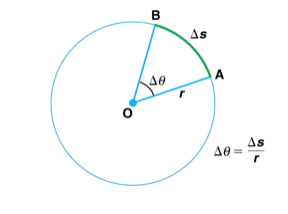
The arc length Δs is the distance traveled along a circular path. Note that r is the radius of curvature of the circular path.
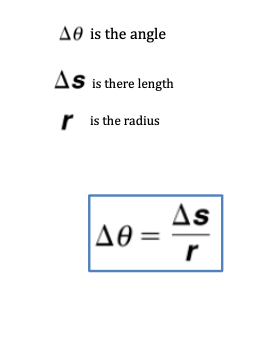
We know that for one complete revolution, the arc length is the circumference of a circle of radius r. The circumference of a circle is 2πr. Thus for one complete revolution, the rotation angle is
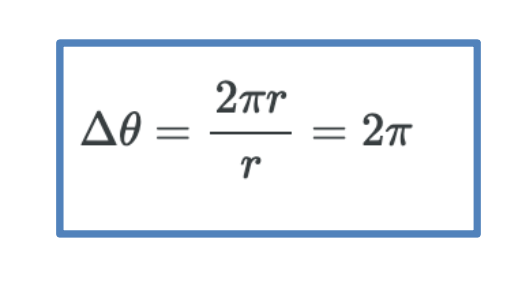
The result is the basis for defining the units used to measure rotation angles, Δθ to be radians (rad), defined so that 2π rad = 1 revolution.
Angular Velocity
How fast is an object rotating? We define angular velocity ω as the rate of change of an angle. In symbols, this is
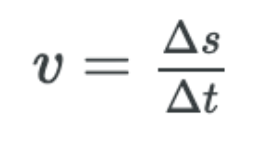
where an angular rotation Δθ takes place in a time Δt. The greater the rotation angle in a given amount of time, the greater the angular velocity. The units for angular velocity are radians per second (rad/s).
Angular velocity ω is analogous to linear velocity v. To get the precise relationship between angular and linear velocity, we again consider a pit on the rotating CD. This pit moves an arc length in a time.

Rotational Inertia
Rotational inertia is the property of an object to counter the direction of its spin in relation to a rotational axis. This is a fundamental concept in physics that is used in problems involving angular momentum and how the distribution of mass correlates to the rotational motion or velocity of a spinning object.
Rotational inertia is dependent on (1) the mass and (2) the distribution of the mass relative to the axis of rotation. Moreover, it is also important to account the momentum of the object. A mass that moves farther from the center or point of rotation is harder to change rotational velocity than a mass that is closer to the axis of rotation.
In essence, the heavier the mass of the rotating object, the harder it is to change the rotational velocity and direction of its spin. Keep in mind these handy lessens as they can help you better understand the concepts behind the challenge. We hope this helps, and good luck to all IRC participants!
References:
– Uicker, John; Pennock, Gordon; Shigley, Joseph (2010). Theory of Machines and Mechanisms (4th ed.). Oxford University Press, USA. ISBN 978-0-19-537123-9.
– Lumen Learning , Physics
The post A Closer Look: Concepts to Ponder on appeared first on International Robotics Championship.
]]>The post Weighing the Right Choice of Matter appeared first on International Robotics Championship.
]]>Have you ever realized how much you have grown from when you were little? Right now, you are probably thrice your size from when you were a toddler. While it is more apparent to notice the weight of things in a large scale, do you know even the smallest bit of matter, the atom, also carries weight?
Atomic mass is measured by the sum of protons and neutrons in the nucleus of a certain atom. Because electrons weigh so little, they usually do not contribute to the atom’s mass. As we know, different atoms with different properties are classified as elements. Each of the 118 elements listed in the modern periodic table has their own corresponding atomic masses.
It must be known, however, the term Atomic Mass should not be confused with Atomic Weight. Atomic weight is the relative atomic mass of each element. Think of it as the ratio of the average mass of an element by also considering its isotopes. An isotope is a species of a certain atom that differs by the number of neutrons. For instance, do you know carbon has Though sometimes the Atomic mass and Atomic weight are used interchangeably just as seen in the examples below, it is important to recognize their difference.


Atomic weight is measured in atomic mass units (amu), also called daltons. Here is a list of some elements with their atomic weights. (Tip: these are hints for the 4th stage so read them carefully!)

All of the known elements to man have their atomic weights not only identified, but also tactically arranged in the periodic table. Looking at the periodic table, you could have noticed that the atomic weight increases as atomic number increases. From left to right, the atomic weight increases. The same increasing trend is seen from top to bottom.
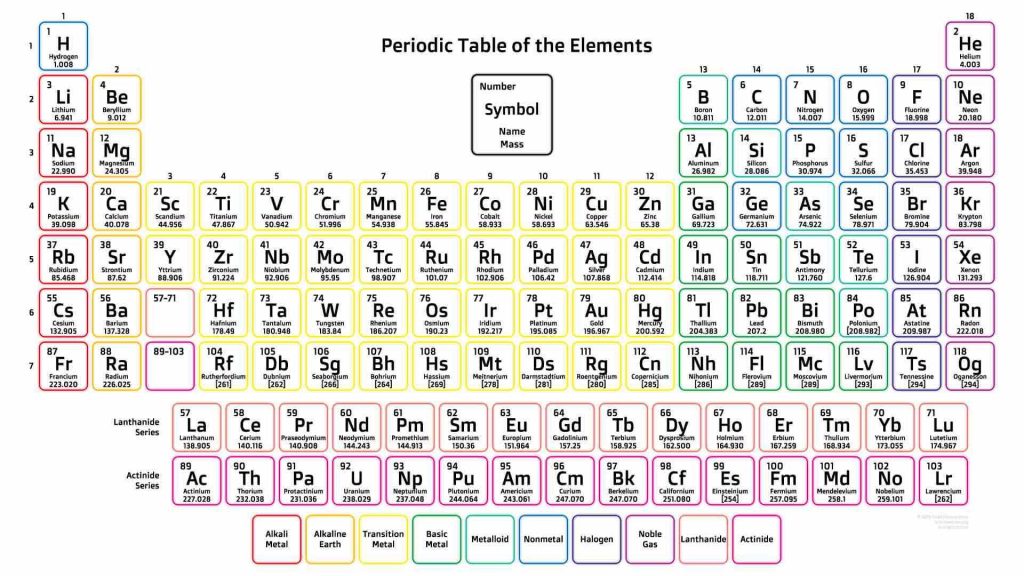
Since it is unpractical for scientists to count the number of particles in a given reaction, chemists will opt to weigh each of the atoms to scale their quantity. The atomic weight is a fundamental property of matter because it can greatly predict the behavior, reaction and tendencies of the atom which could help scientists arrive to quantifiable conclusions.
Sources:
https://www.remm.nlm.gov/atomicshorthand.htm
https://socratic.org/chemistry
https://www.thoughtco.com/color-periodic-table-with-atomic-masses-608859
The post Weighing the Right Choice of Matter appeared first on International Robotics Championship.
]]>The post S3: Debrief appeared first on International Robotics Championship.
]]>Starfleet wants a full debrief about what happened so far. Also, they want full details about the repairs of the ship. As soon as you get to the starbase, you will have lots of surprises.
So, take 5 minutes of your time and see what you can write up.
The post S3: Debrief appeared first on International Robotics Championship.
]]>The post IRC saying thank you to year 2020 and welcome to 2021 appeared first on International Robotics Championship.
]]>IRC Stage 3: All decks, brace yourselves, will be concluding the participants standing for 2020 on December 22, 2020 and will be tailing by IRC Stage 4: A Friend in need is a friend in deed, on 6th of January until 10th of January 2021 and grand finals follows through on 20th of January to 24th of January 2021.
So, let’s keep it coming… keep the ball rolling… keep on trying… gather as many score as you can to the final stage and compete at the grand finals. Only the top 20 highest scorers will be allowed to qualify on the grand finals.
More surprises and fun learning await you!!!
You make it to IRC 1st season you’ll surely make it through the rest of the year’s robotics and programming competitions 
For the time being, we from the International Robotics Championship Organization are wishing you all a very HAPPY CHRISTMAS and Prosperous 2021!

See you real all soon!!!
Visit www.robochamp.org for more update and announcements.
The post IRC saying thank you to year 2020 and welcome to 2021 appeared first on International Robotics Championship.
]]>The post Deadline of Submissions for Stage 3 is extended!! appeared first on International Robotics Championship.
]]>You have 2 more days before the to submit your solutions.
Last 16th of December 2020 08:00 (UTC), stage 3 was opened. In this stage you have to solve one mission alone. You need to repair the warp engines by teleporting the repairbot to move the switches on the command console.
The first task is to stabilize the power by setting the power slider of the main auxiliary power system to “0” zero. From there you have to follow further information on the computer screen on how to manually override the other instructions. Be careful and think well, because the next step will depend on the decisions you will be making, a good choice will give you a boost.
IRC 2020-2021 competition is intended to make robotics and programming learning fun and challenging. We make sure that there is always something new to know. Only your imagination is the limitation. You may would want to browse into the Support & News section found in the menu tab. Explore our website and you will find learning materials, tutorials and News updates that you may find life lines finding solutions
Good Luck!!!
International Robotics Championship… Fun learnings never end!!!
The post Deadline of Submissions for Stage 3 is extended!! appeared first on International Robotics Championship.
]]>The post VRT Updated Version is available in IRC Download and Support section appeared first on International Robotics Championship.
]]>Do not fret! Simply update VRT Simulator by reinstalling and then restarting the application.
To do this,
- Log into your account on the IRC webpage.
- Click on the tab Support > Needed software > Download Virtual Robotics Simulator
- The download shall commence.
- Once downloaded, tick in I agree… and click install button

- When fully installed, open the application and a “Modify set-up” tab will appear. Select “Repair.”

- Wait for the repair to successfully complete.
- Updated version should look like this.

UPDATED VERSION INFORMATION

With these adjustments, we are giving two days extension. Hence so, the deadline for Stage 3: All decks, brace yourselves will be moved to December 22, 2020. All the best and good luck participants!
The post VRT Updated Version is available in IRC Download and Support section appeared first on International Robotics Championship.
]]>The post How to Install Third Party Blocks (like RGB block) In EV3 Mindstorms appeared first on International Robotics Championship.
]]>- If you want to install the classic Mindcub3r block, download ColorSensorRGBzip-v1.00.zip to your computer.
- If you want to install the enhanced RGB block from ODFL, download this block on your computer.
On a computer running Windows, find the file in Windows Explorer, click with the right mouse button and select Extract all…

- In the Block Import and Export dialog, select Browse.

- Find the file, which has .ev3b extension on your computer and Open it.

- Select the .ev3b file from Select Blocks to Import and then select Import.

- To complete the installation, close the dialogs and exit from LEGO MINDSTORMS EV3 software.
Source:
How to build MindCub3r for LEGO MINDSTORMS EV3: http://mindcuber.com/mindcub3r/mindcub3r.html
The post How to Install Third Party Blocks (like RGB block) In EV3 Mindstorms appeared first on International Robotics Championship.
]]>The post How to Use Sensors In RGB Mode appeared first on International Robotics Championship.
]]>The original EV3 color sensor supports reflected light, ambient light and color mode, but this does not meet our needs. David Gilday, who made mindcuber, created the EV3 Color RGB mode in the early days, which greatly improved the EV3 Color Sensor.
Original Digital Flipped Lab (OFDL) have added other functions, including the RGB comparison mode and the raw value mode.
You can download the block from here: https://github.com/a10036gt/EV3-ColorRGBEnhanced-Block/releases/

How it works
The block has 3 different modes which will help you use sensors in enhanced way:
Measure – RGB color
This mode returns the Red, Green and Blue components of the RGB color.

Compare – RGB color
This mode is a variant of RGB mode, which allows you to change the input value to achieve the judgment effect, as shown above: 20 is Error Amount, R, G, B are 170, 160, 120, respectively.
The object reads Red to 150-190, Green at 140-180, and Blue at 100-140. When the three are established, the Boolean value is finally output.
The interval is determined by Error Amount, which is what you input. The RGB value +-Error is the judgment condition.

HSVL Mode
This mode allow you reading the HSVL value of EV3 Color sensor (convert from RGB).

Citation:
ODFL Original Digital Flipped Lab
https://ofdl.tw/en/ev3-hacking/ev3-color-sensor-adv-block/Ver 1.6:
.Add HSVL Mode.
.Remove Raw value mode (merge to EV3-AdvEV3Col-Block)
Download
Download Link (GitHub):
Author:OFDL HSU、T2H Robotics
Ver:1.6
The post How to Use Sensors In RGB Mode appeared first on International Robotics Championship.
]]>The post How to Solve Complex Tasks appeared first on International Robotics Championship.
]]>What is the Goal Breakdown Structure?
If you search on the internet, you will find various definitions, some complicated, some simple to understand. In case of robotics missions as you are given in our competition, you can translate it into breaking the big task into multiple, simpler tasks, which are or are not related between each other.
This kind of practical thinking is something that us, humans, do all the time. For example, when we go to school, we need to do some simple tasks in the process:
- get dressed:
- check weather first;
- get proper clothing;
- fill our schoolbag with whatever we need and equip it;
- make sure we close our house door;
- take the bus:
- find a seat on the bus;
- check we have everything we need to proceed;
- get to class:
- make sure you know to which class you are heading;
- put your stuff in the locker;
- keep only the necessary stuff for the class.
As you can see, there are little goals you need to achieve and have certain subgoals which will finish the main goal. But every each one of them is simple, easy to understand and has little instructions in the process.
Now that you understood this, let’s go back to robotics  . We will use the mission from stage 3 as an example.
. We will use the mission from stage 3 as an example.
How to breakdown a robotics mission
Understand needed principles
First of all, you need to look at the whole mission and identify what principles apply for it. Let’s have a look at it.
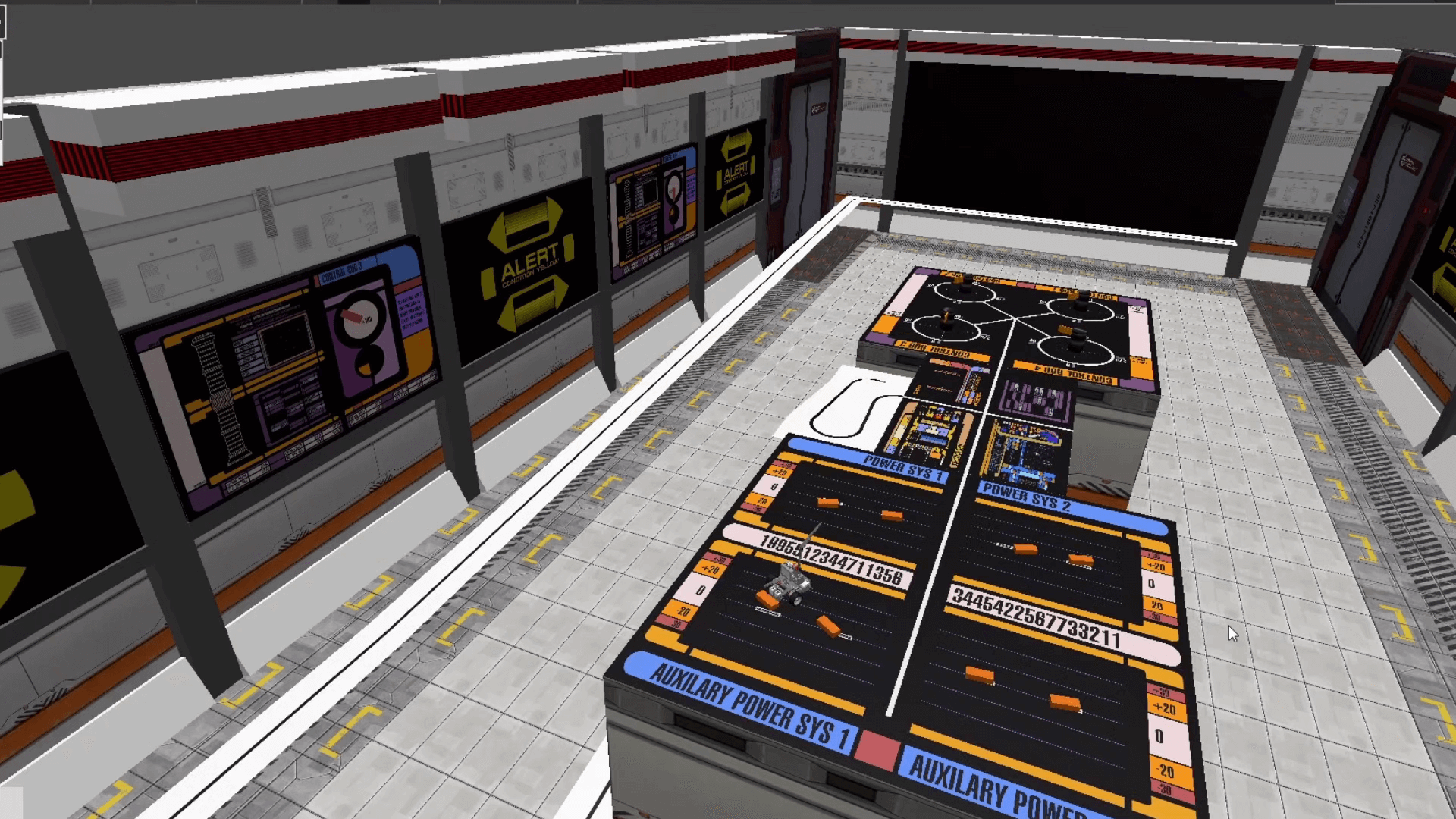
You can see certain elements which are obvious: we have black lines on white background, white lines on black background and maybe some orange lines on black background. Then, there are some blocks which needs to be pushed and some rotating devices on the other side of the table.
So, the principles involved are:
- classic line follower (following black line);
- inverted line follower (following white line);
- color line follower (following orange line);
- push regulated objects (you can push the orange blocks and also the rotating devices).
These are also the simple tasks the robot has to perform.
As you can see, these are basic functions, which need some skills of programming and designing the robot, but it is not something new or unique. I am sure you have done this a couple of times before  .
.
Ok, you understood this part. What now? Well, we need to design the robot which can carry out these simple tasks.
Designing the robot
Robot design is very important as many of the simple tasks will be solved by the construction itself. Think how you will push the object so that the robot should just move forward, without the need of having additional claw or mechanisms. The simpler the design, the more effective!
Then, you need to think what programming algorithms you know and how that influences the design. For example, you know how to implement the classic line follower with only one sensor? Good for you! Now where do you put that one sensor so that the robot can move quick and correct?
You need to ask yourself all these questions before starting the design. Maybe you will not get it right at first, because after testing you will see you will need some more stuff. That’s alright, it will surely happen. But, if you are giving it some thoughts before the first iteration, maybe you will not need to make so many of them afterwards.
After you feel the design is ready, you need to create some basic functions so that you will simplify how you will right the code. In most cases, the functions are custom blocks.
Creating basic custom blocks / functions for the robot
This will certainly help you simplify your code. Let’s say you need to create a line follower block. You should create one which will have some parameters, like speed or turn correction. Why? Because in some cases you will want to move faster, in others you will want to move more precise.
For the given example, you can see that if you implement a classic line follower algorithm, which stops whenever intersects a black line, the robot will travel from the start all the way up to the table. Simple, right?
So, the main program will just have one block for line follower instead of 10 blocks for just one path to be followed. It will be much more quicker to go through the code when you will want to make adjustments and will save you lots of time.
Also, if there is a problem in the line follower algorithm, you will need to correct it in just one place instead of many others.
Conclusion
This is just a basic method to solve complex missions for every competition, not just this one. Of course, you should not exaggerate and think of every action as a goal, but little by little you should start to gain progress.
Remember this little thing: whatever you need to solve was created by a human, so there is a solution to it. And most probably, he created the mission in the same way you want to solve it: step by step  .
.
The post How to Solve Complex Tasks appeared first on International Robotics Championship.
]]>